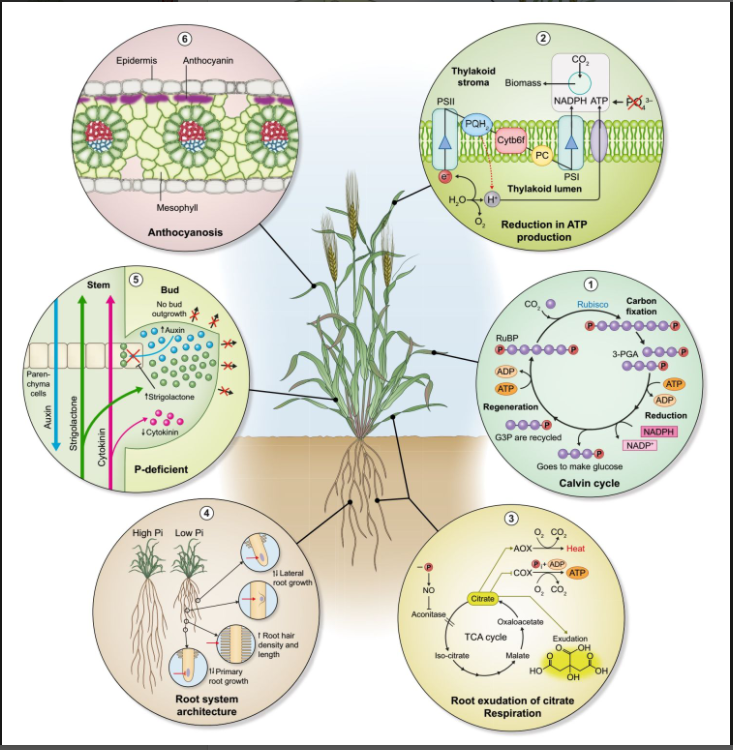Phosphorus is an essential element for the plant, in fact its deficiency may cause serious consequences for its growth and productivity. Moreover, phosphorus is characterized by a low mobility in the soil and a low efficiency of use. Considering these peculiarities a correct intake is fundamental not only in the area explored by the roots, but also in the phenological phase of the plant, when the absorption of phosphorus is essential.

Moreover, phosphorus plays an essential role for a correct growth and development of plants:
- It favours rooting, makes the plant more resistant to diseases and less sensitive to lodging
- It is mainly concentrated in the youngest tissues of the plant, it is important for the energy metabolism and in the synthesis, demolition and transformation reactions
- It is extremely important in the flowering phase and intervenes in the fundamental processes of metabolism
- It increases the speed of fruit ripening and improves quality
Solubility, absorption and retrogradation of phosphorus
Besides the extremely low mobility, the solubility of phosphorus, thus its ease of absorption, depends on the soil pH. Its solubility is at its maximum in generally neutral soils, while in too acidic or basic ones it may encounter insolubility (phosphorus retrogradation).
Through different chemical, physical and biological transformations and thanks to the solubilizing ability of roots, the compounds containing phosphorus release HPO42- ions available for the plants, even if H2PO4- ion is the most assimilable by roots. However, it must be taken into account that the ratio between the two ions is determined by the soil pH, therefore with a pH inferior to 7, the ion HPO42- prevails, while with a pH superior to 7, the ion H2PO4- prevails.
In soils unfavourable to phosphorus solubility, the element may be subject to retrogradation phenomena which prevent from its absorption by the plant:

- if dissolved in water, phosphorus is retained by colloids
- in strongly acidic soils, it gives rise to insoluble compounds with iron and aluminium forming Fe and Al phosphates
- in calcareous soils, tricalcium phosphate is formed and it is completely insoluble
The importance of phosphorus fertilization
In those periods of major development of the plant, the content of phosphorus present in the circulating solution within the soil is inferior to the daily intake, therefore a reintegration of the nutrient is necessary through fertilization.
On average, only 10-20% of the phosphorus provided to the soil through fertilization is absorbed by the plants. For this reason, it is recommended localizing the element in close proximity with the roots. Moreover, since it is subject to precipitation (calcium phosphates, magnesium, iron, etc.), it may be subject to losses due to surface runoff or to an accumulation in bodies of water (eutrophication of rivers, lakes and sea).
It is therefore fundamental to apply fertilizers containing high-quality and highly soluble phosphorus. If they also contain humic acids, efficiency is increased enhancing the absorption of phosphorus thanks to the formation of humo-phosphates compounds.
In this sense, a fertilization based on granular products of the Active and Active Premium families ensures the intake of soluble phosphorus. While, those of the Fert and Fert Premium families, which are organo-mineral formulas, besides containing high-quality soluble phosphorus, also contain humic extracts that during granulation bind to phosphorus protecting it from retrogradation phenomena.
The intake of high-quality phosphorus through fertilization and its absorption are fundamental requirements to favour an excellent rooting, to reduce plant susceptibility to diseases and to allow a correct vegetal development. Phosphatic fertilization, therefore, contibutes to improve the external appearance and the value of the vegetal production increasing the quality and quantity of the final yield.

